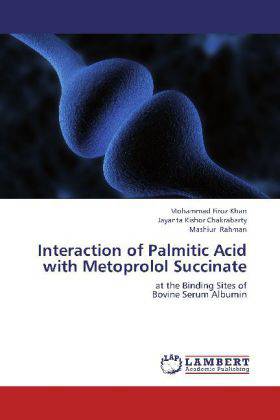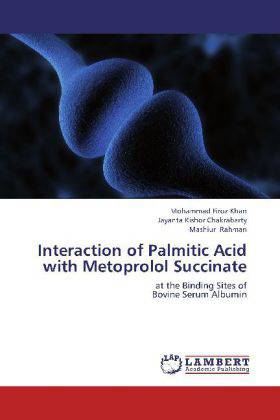
- Afhalen na 1 uur in een winkel met voorraad
- Gratis thuislevering in België vanaf € 30
- Ruim aanbod met 7 miljoen producten
- Afhalen na 1 uur in een winkel met voorraad
- Gratis thuislevering in België vanaf € 30
- Ruim aanbod met 7 miljoen producten
Zoeken
Interaction of Palmitic Acid with Metoprolol Succinate
at the Binding Sites of Bovine Serum Albumin
Mohammad Firoz Khan, Jayanta Kishor chakrabarty, Mashiur Rahman
Paperback | Engels
€ 48,45
+ 96 punten
Omschrijving
The binding of Metoprolol succinate, a -adrenoceptor blocker, to bovine serum albumin was studied by equilibrium dialysis method at 28 C and pH 7.4. The study was carried out by using ranitidine and diazepam as site-I and site-II specific probe, respectively. Since, dietary fatty acids are highly protein bound, hence the binding profiles of metoprolol succinate were also characterized in presence or absence of Palmitic acid. The interactions of dietary fatty acids and other endogenous ligands are supposed to interfere the pharmacokinetics and protein binding profiles of the drugs. Therefore, the present study was undertaken to investigate the inside binding profiles of metoprolol sucinate and displacement of metoprolol sucinate from binding sites in presence of endogenous ligands or dietary components. This research provided the evidence of interaction of higher concentration of palmitic acid at the binding sites on BSA changing the pharmacokinetics properties of Metoprolol succinate. This in vitro research implies that high fat diet may enhance the free metoprolol concentration in blood which may ultimately alter the pharmacological and therapeutic actions of the drug.
Specificaties
Betrokkenen
- Auteur(s):
- Uitgeverij:
Inhoud
- Aantal bladzijden:
- 96
- Taal:
- Engels
Eigenschappen
- Productcode (EAN):
- 9783659269547
- Uitvoering:
- Paperback
- Afmetingen:
- 150 mm x 220 mm

Alleen bij Standaard Boekhandel
+ 96 punten op je klantenkaart van Standaard Boekhandel
Beoordelingen
We publiceren alleen reviews die voldoen aan de voorwaarden voor reviews. Bekijk onze voorwaarden voor reviews.











